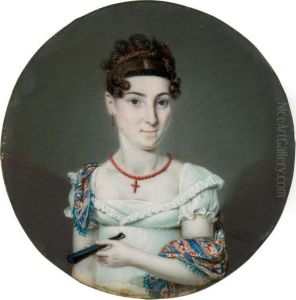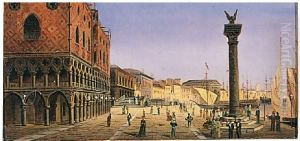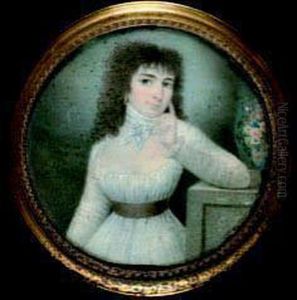Giovanni Battista Gigola Paintings
Giovanni Battista Gigola was an Italian artist born in 1767 in Brescia, an important artistic center in Lombardy. Best known for his work as a miniaturist and painter, Gigola was active during a period of significant transition in European art, bridging the late Baroque and early Neoclassical movements. His works are characterized by their delicate execution, detailed brushwork, and often included portraiture, a popular genre of the time.
In the context of the late 18th century, Italy was a hub of artistic innovation, and Gigola's work was influenced by the prevailing winds of Neoclassicism, which emphasized a return to the simplicity and purity of the arts of ancient Greece and Rome. Despite the political upheavals of the era, including the Napoleonic Wars and the shifting boundaries of Italian states, Gigola managed to sustain a successful career.
Giovanni Battista Gigola's clientele included members of the aristocracy and the bourgeois, for whom he created intimate portraits in miniature, often meant to be kept as personal keepsakes or tokens of affection. These miniatures were typically painted on ivory and were highly sought after for their exquisite detail and likeness to the sitter. Gigola's work as a miniaturist placed him within a long tradition of such artists in Italy, but he distinguished himself with his refined style and ability to capture the character of his subjects.
Giovanni Battista Gigola died in 1841, leaving behind a legacy that would be appreciated by art connoisseurs and historians. His work provides a window into the tastes and aesthetics of the Italian upper classes during a period of great cultural change. Although not as widely known as some of his contemporaries, his contribution to the art of miniature painting is recognized by those familiar with this niche of art history.



